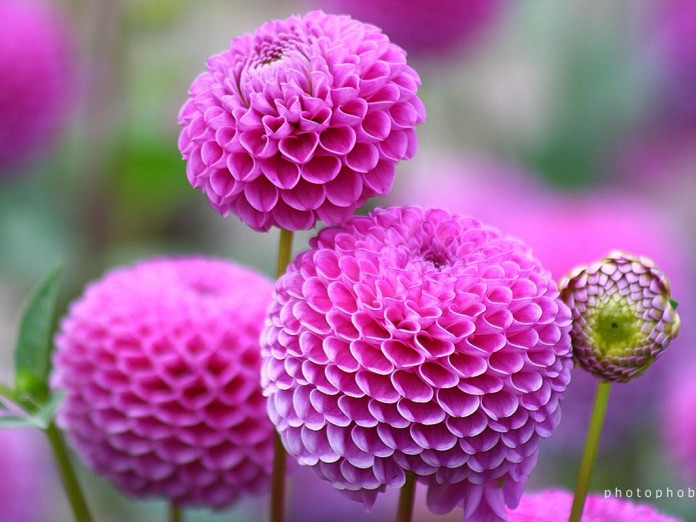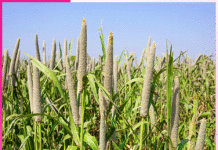The vanity of the garden and the king of winter, ‘Dahlia’ is at the pinnacle of fame because of its unmatchable beauty. It enhances the beauty of the garden or your nursery.
They look incomplete without Dahlia plants in them. Dahlia is a plant with branches and it usually grown for its big sized flowers. Its origin was firstly noted Mexico.
“The dahlia you brought to our isle
Your praises for ever shall speak;
Mid gardens as sweet as your smile,
And in colour as bright as your cheek.”
It was brought in India by the Royal Agriculture Society, Kolkata in the year 1857. Dahlia does not have fragrance. It is mainly planted for its attractive colours. Dahlia plant’s height varies between 0.75 m to 1.0 m and it has often 2-3 branches.
Its stem is always green. The flower buds emerge at the same time from the stem and branches together. The flowers ,which continue to bloom starting from December till March, are quite big in size and come in all colours except for blue colour. It has got underground condyles just like that of sweet potatoes.
Dahlia is cultivated in pots as well as in soil beds and is decorated in budvase too.
Table of Contents
Major Varieties of Dahlia
Single Flowered Dahlia, Anemone Flowered Dahlia, Collerette Dahlia, Star Dahlia, Decorative Dahlia, Dwarf Bedding Dahlia, Paeony Flowered Dahlia, Semi-Cactus Dahlia, Cactus Dahlia, Pompon Dahlia, etc.
Soil Type
It is important to Cultivate Dahlia in soft soil which has sufficient amount of manure and good water drainage. The flowers must have the sunlight. At the time of blooming, compost should be used. For better results the compost should be applied in suspension form, adding just a little amount of Neem cakes is a must.
The Right Time for Sowing
Starting from March, Dahlia is sown by Planting method, till April in hilly areas whereas in the plains it is done starting from September and the planting stops in October.
Seed time for Dahlia in hilly areas starts from February and gets over by March while in plains the seed time is September-October. When the seedlings grow and gain a height of 2-3 inches, these are ready to be transferred at the desired place.
Cultivating Dahlia with Cuttings
Cuttings of the soft branches are planted in sandy soils. The roots grow faster if the cuttings are dipped a little in Seradex B liquid and planted in sandy soils. Once the roots grow properly, the plantlets can be relocated to the required place.
Growing Dahlia in Earthen Pots
Medium sized pots are suitable for Dahlia cultivation.
Preparing the Fillings for Pots
Loam Soil- 8 kgs, Leaf Manure- 5kgs, Dung Manure-8kgs, Super Phosphate- 50 gms, Murate of Potash- 25 gms, Limestone- 5-10 gms
Above said ingredients are mixed and the filling is prepared including Limestone 10 days earlier and kept aside, plantlets with healthy roots should be selected and planted in the mixed soil. Plantation is followed by light irrigation.
Supporting the Plants
Dahlia is a plant with green, tender stem and branches that is why it’s critical to provide required support. The plant should be tied along with a bamboo or wooden stick with the help of hemp.
Nishkaliyan
Every branch bears 3 buds, if all the three are retained together, the size of the flower gets reduced therefore only the bud in the centre is reserved and the other two are plucked off.
Preserving the Condyle
When the Dahlia plant starts to wither, dig it out from the pot and cut the stem separate, leaving behind a 10 cms stem. The roots should be washed with water. Fill the pots with leaf manure and place these condyles i.e. the roots in it. Keeping the plants in cool , dry places is favourable for the plants.
Plant Conservation
It is necessary to protect the Dahlia plant from the disease named ‘Brown Spots’. As you seen the brown spots in Dahlia leaves start control measures immediately because this disease spreads rapidly in plants. Blitox solution of strength 0.5 gms/ltr should be spread on the leaves to get rid of brown spots.
Insects
An insect named Aphid, sucks the juice from Dahlia leaves which leads to wrinkling of the leaves. For the protection from these insects, a solution of 0.04 gms/ltr Malathion 50 E.C. is spread all over the plants. So get ready to give a warm welcome to these beautiful flowers, the gift of nature by planting it in your nursery.
Saral Jain
Follow us on Facebook, Twitter,LinkedIn and Instagram, YouTube to get more updates related to Sachi Shiksha – The Famous Spiritual Magazine in India.


















































